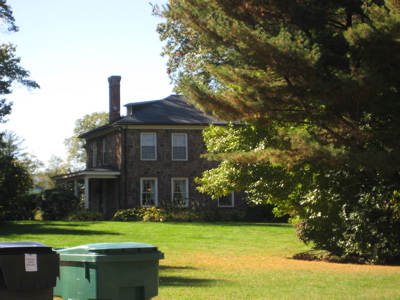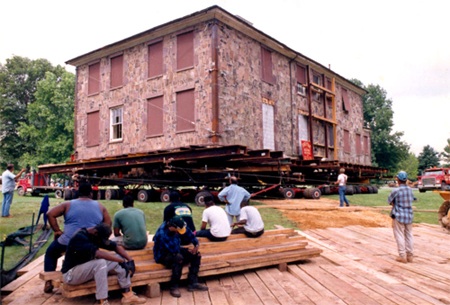Francis Gillette House, Bloomfield
545 Bloomfield Avenue
This was a featured site on the trail! Read more here!
I began my tour of this far-ranging trail close to home… in Bloomfield at a place that turns out to have a history important enough for the New York Times to report upon. But not important enough for the town of Bloomfield to bother with a picture. They acknowledge the house, but offer a picture of a pasture. And that’s why you read this website – I get the tough shots, even if it meant stopping in the middle of the fairly busy Bloomfield Avenue to get it.
 As the Bloomfield town website says, “This Greek Revival-style home was built in 1834 and is on the national registry of historic places. During the Civil War, the home was used as an overnight stop for the underground railroad.” Weak! There’s so, so much more to this house and Francis Gillette. And the CTMQ crossover material here is impressive. But with the 2011 update of the Freedom Trail website, we learn this:
As the Bloomfield town website says, “This Greek Revival-style home was built in 1834 and is on the national registry of historic places. During the Civil War, the home was used as an overnight stop for the underground railroad.” Weak! There’s so, so much more to this house and Francis Gillette. And the CTMQ crossover material here is impressive. But with the 2011 update of the Freedom Trail website, we learn this:
Francis Gillette (1807-1879), a prominent abolitionist and politician, sheltered slaves on the Underground Railroad on his property during the early years of the movement. He held numerous state positions throughout his lifetime, including U.S. Senator and chairman of the Connecticut Board of Education (1849-1865). As a member of the state legislature in 1838, he advocated for the black vote and condemned the “Black Law,” which passed in 1833 in response to Prudence Crandall’s school. The Black Law restricted blacks from coming to Connecticut to receive an education and prohibited anyone from opening a school to educate blacks from outside the state without first receiving permission from the town.
But I found even more: Gillette graduated from Yale College in 1829 and was always an ardent abolitionist. He was a member of the Connecticut House of Representatives in 1832, 1836 and 1838 served as chairman of the Connecticut Board of Education from 1849 to 1865. He aided in the formation of the Republican Party in Connecticut and for several years was a silent partner in the Evening Press, the organ of the party. He engaged in the real estate business in Hartford, Connecticut until his death there on September 30, 1879. He was interred in Riverside Cemetery in Farmington, Connecticut. (Which, as you know, is part of the Amistad Trail which is part of the whole Freedom Trail as well.)
His son also happened to be William Gillette, whose Gillette’s Castle is now a museum of sorts down in Haddam. (CTMQ Visit here).
But the house itself has a very interesting recent past; having been moved a pace to its present location over the course of five long days. You can read about it all here – a rather amazing feat.

…………………………………………………….
Back to the Underground Railroad Trail
Back to the Freedom Trail
Leave a Reply